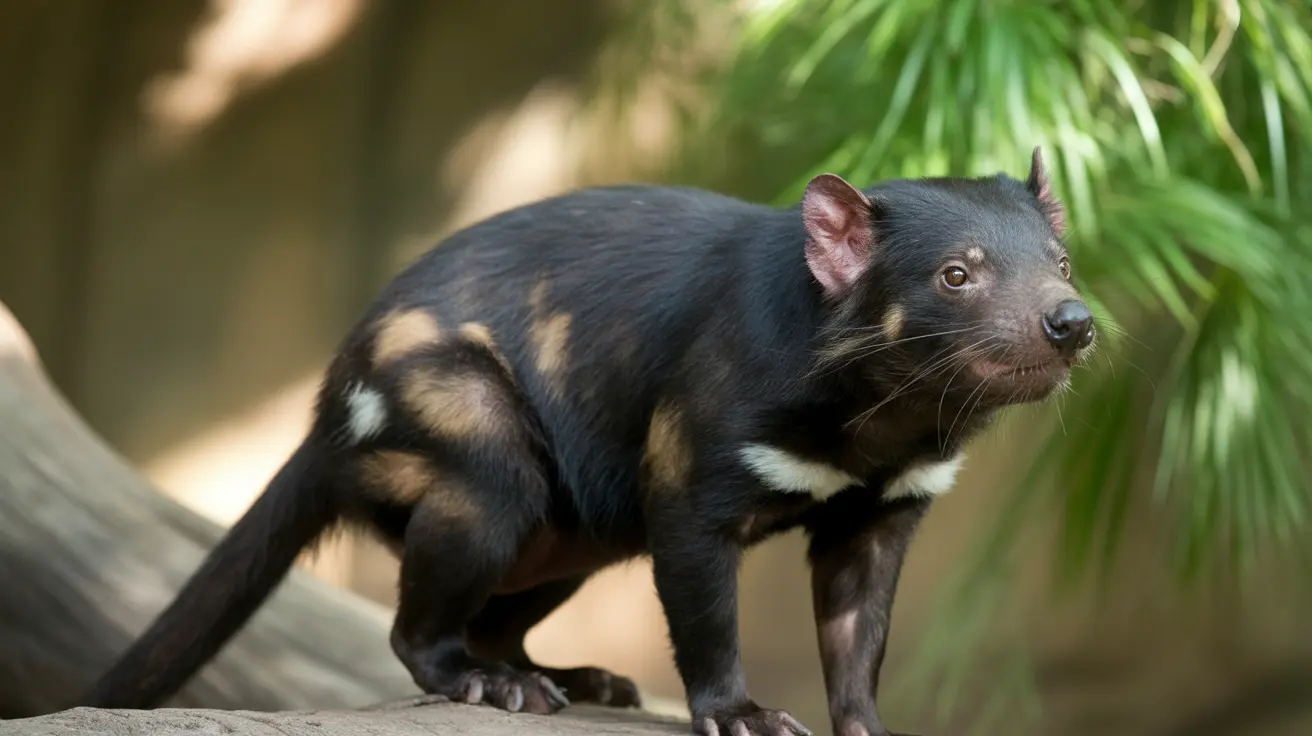Endangered Australian Marsupials Face Critical Challenges
Tasmanian devils have earned their endangered status primarily due to Devil Facial Tumor Disease (DFTD), a devastating contagious cancer that has decimated wild populations. This unique disease spreads through biting, which is common during the devils' aggressive feeding behaviors and social interactions.
Beyond disease, these apex scavengers Tasmania faces additional threats including habitat loss, vehicle strikes, and predation by introduced species. The combination of these factors has led to dramatic population declines, making conservation efforts like those at the LA Zoo increasingly vital.
Tasmanian Devil Conservation Efforts and Breeding Programs
The LA Zoo's commitment to housing Tasmanian devils connects to broader Aussie Ark Tasmanian devil breeding initiatives and collaboration with Australian conservation organizations. Aussie Ark has achieved remarkable success in breeding programs, producing devils like Danny Zuko and Crush while establishing crucial insurance populations.
These captive breeding programs serve multiple purposes: maintaining genetically diverse populations, conducting research on devil health and behavior, and preparing for potential reintroduction programs. Remarkably, Aussie Ark has helped facilitate the reintroduction of Tasmanian devils to mainland Australia for the first time in 3,000 years.
Understanding Tasmanian Devil Feeding Behavior and Ecology
Visitors to the wildlife exhibits LA Zoo can observe the unique characteristics that make Tasmanian devils such fascinating creatures. These marsupials possess the strongest bite relative to body size of any mammal, capable of crushing bones and consuming entire carcasses.
Despite their fearsome reputation, Tasmanian devils play a crucial ecological role as nature's cleanup crew. Their scavenging behaviors help maintain ecosystem balance by disposing of carrion and controlling populations of smaller animals. During feeding frenzies, they become notably vocal—earning them their "devil" moniker due to their spine-chilling screeches and growls.
Tasmanian Devil Habitat and Daily Life
In their natural Tasmanian devil habitat, these solitary marsupials are primarily nocturnal, emerging at dusk to forage for food. They're opportunistic feeders, consuming everything from roadkill to small mammals, birds, and even insects when necessary.
The Animals of Australia exhibit at the LA Zoo recreates elements of their native environment, allowing visitors to observe natural behaviors while supporting ongoing research into their needs and preferences. This research contributes valuable data to global efforts focused on saving Tasmanian devils.
Supporting Wildlife Conservation Through Education
For pet owners, observing Tasmanian devils can provide valuable insights into animal behavior, the importance of species preservation, and the interconnectedness of ecosystems. Just as we care for our domestic companions, wild animals require dedicated conservation efforts to thrive.
The presence of these devils at the LA Zoo serves an important educational purpose, helping visitors understand the challenges facing endangered species and the role that accredited zoos play in conservation efforts worldwide.
Frequently Asked Questions
Where can I see Tasmanian devils at the Los Angeles Zoo?
You can view the Tasmanian devils daily, weather permitting, in the Animals of Australia exhibit at the LA Zoo.
Why are Tasmanian devils endangered and what threats do they face?
Tasmanian devils are endangered mainly due to Devil Facial Tumor Disease (DFTD), a contagious cancer, along with habitat loss, vehicle strikes, and predation by other animals.
How is the LA Zoo contributing to Tasmanian devil conservation?
The LA Zoo collaborates with Australian conservation organizations like Aussie Ark and the Australian government to raise awareness, support breeding programs, and promote research on Tasmanian devil health and ecology.
What are some unique behaviors or characteristics of Tasmanian devils?
They have the strongest bite relative to body size of any mammal, are solitary but noisy scavengers during feeding frenzies, and play an important ecological role as apex scavengers and predators.
What has Aussie Ark achieved in Tasmanian devil conservation?
Aussie Ark has bred Tasmanian devils like Danny Zuko and Crush, established insurance populations, conducted disease management, and helped reintroduce devils to mainland Australia for the first time in 3,000 years.
Conclusion
The return of Tasmanian devils to the LA Zoo represents hope for one of Australia's most endangered marsupials. Through careful breeding programs, research initiatives, and public education, facilities like the LA Zoo contribute significantly to global conservation efforts.
Whether you're a dedicated pet parent or simply someone who appreciates wildlife, visiting these remarkable creatures offers an opportunity to witness conservation in action while supporting crucial efforts to protect endangered species for future generations.






